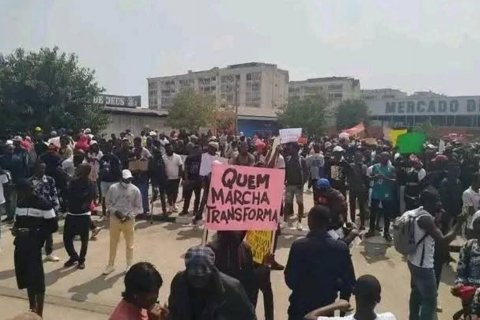The data was provided by the chairman of the Board of Directors of Ozango Minerais, a company that has the British company Pensana and the Angolan Sovereign Fund among its shareholders, in addition to two Angolan minority holdings, and which intends to begin construction work in May of this year.
"It is a mineral that is very useful in the context of the energy transition", Alcídio José explained to journalists during a visit by a diplomatic delegation that is travelling along the Lobito Corridor, highlighting the growing interest in reducing carbon emissions.
The mineral in question is used in permanent magnets, a critical raw material for electric vehicles.
Located in Longonjo, about 70 kilometers from Huambo, a province in the center-south of Angola, the mine is served by the Lobito Corridor railway line and covers a perimeter of about 200 hectares in the exploration area.
"We are fortunate to have a significant reserve [of rare earths] here. In the first phase, our production will be equivalent to approximately 2.5 percent of global demand. When we look at this number, it may seem small, but when we put it in perspective that this is a concentrated sector, 2.5 percent from an independent source, in the first phase, is very important," stressed the head of the company that has a renewable concession of 35 years.
"It is a sector that does not exist in many places in the world. Angola will be a point on the map that people will probably look for with a magnifying glass", he highlighted, indicating in the first phase an annual production of 20 thousand tons of this rare earth concentrate.
The company is finalizing contracts to finance this investment, which will be worth around 260 million dollars, with the North American company DFC being one of the main financiers.
With commercial operations scheduled to begin in 2027, Ozango Minerais already has an Australian entity in mind among its potential clients, but has maintained contact with other companies, said Alcídio José.
In a later phase, Ozango intends to develop the processing and separation of the final product to complement the value chain, which means an investment of another 260 million dollars.
"Our interest is, obviously, to bring the entire integrated structure, to verticalize it all in Angola due to the obvious advantages that this brings. Therefore, we would have lower operating costs, we would have efficiency here in terms of the value of the product, the price of the final product", he highlights.
The official also points out other advantages, namely job creation, estimating 860 jobs in the construction phase and 430 direct jobs in the initial operation phase.
Mining also has disadvantages, as it is an area with human activity and an activity that is sensitive from an environmental point of view, implying the movement of some areas of agricultural production, issues that the person in charge assured are being coordinated with representatives of local communities.
Around 20 diplomats of various nationalities are taking part in a visit to the Lobito Corridor, organized by the US Embassy in Angola, visiting some of the emblematic projects that are being developed along this infrastructure that runs through Angola for 1300 kilometers, from the Port of Lobito (coast) to the border with the Democratic Republic of Congo.







